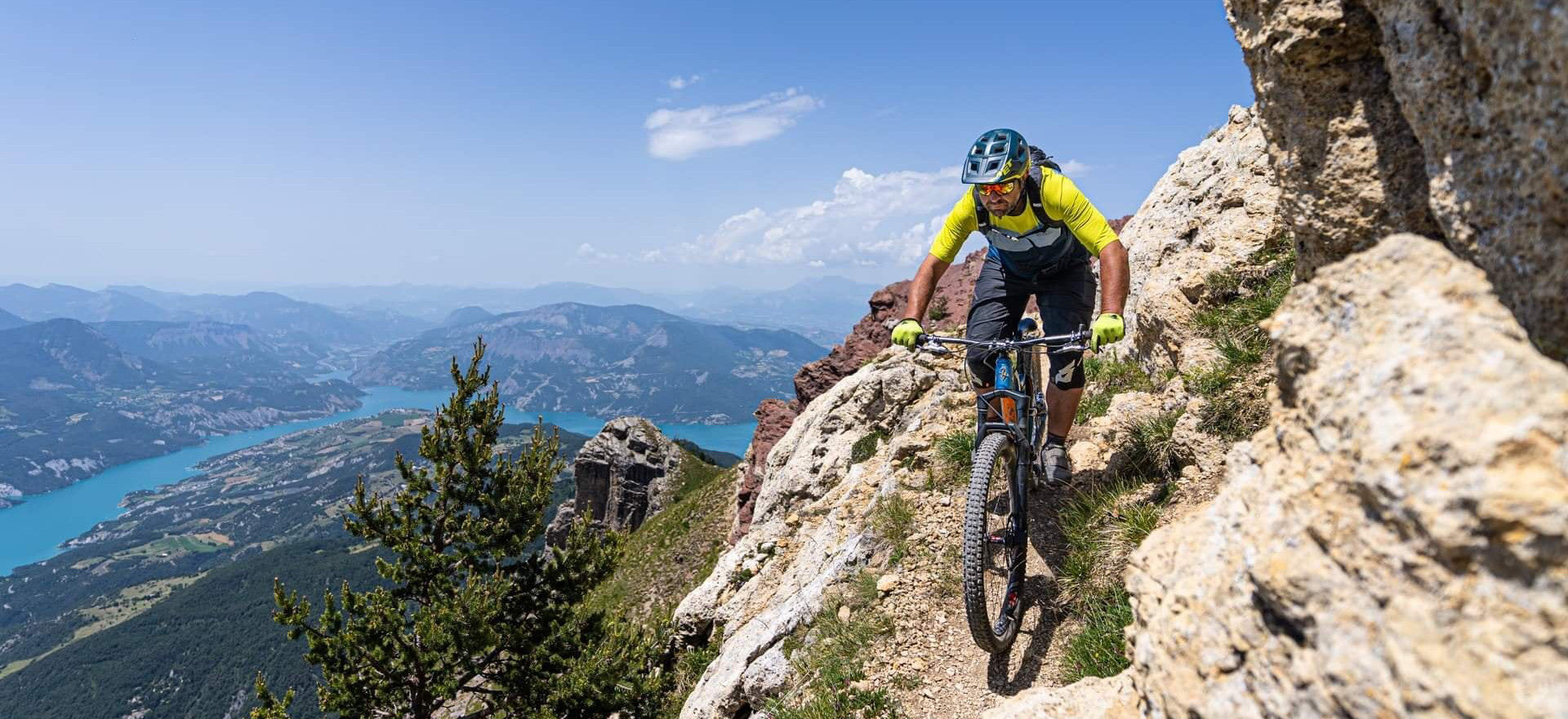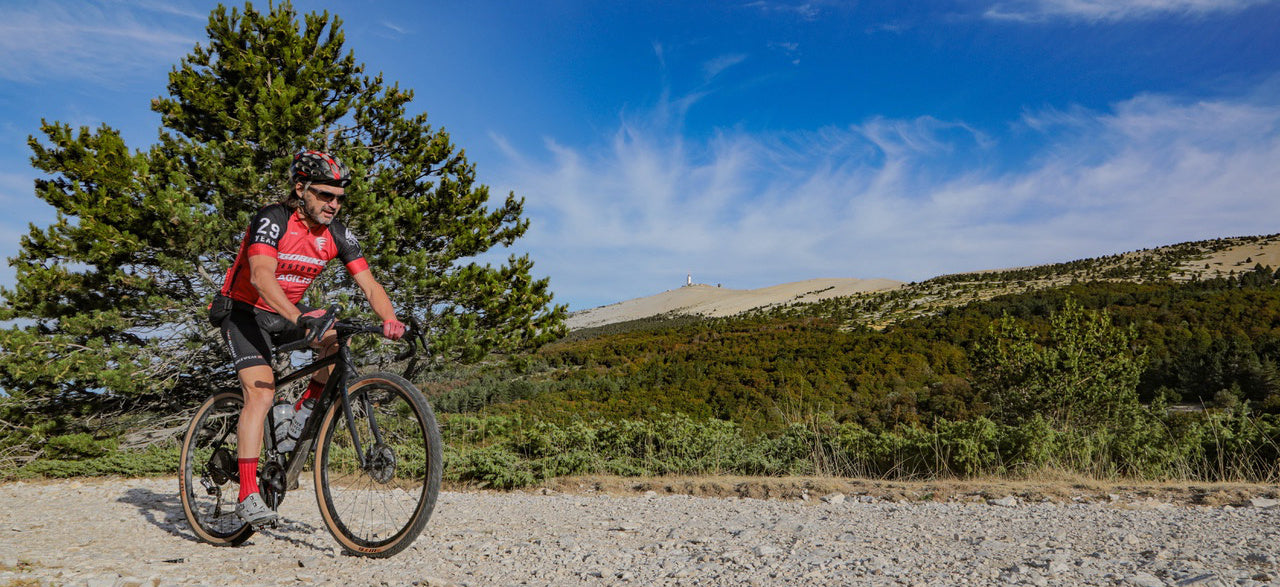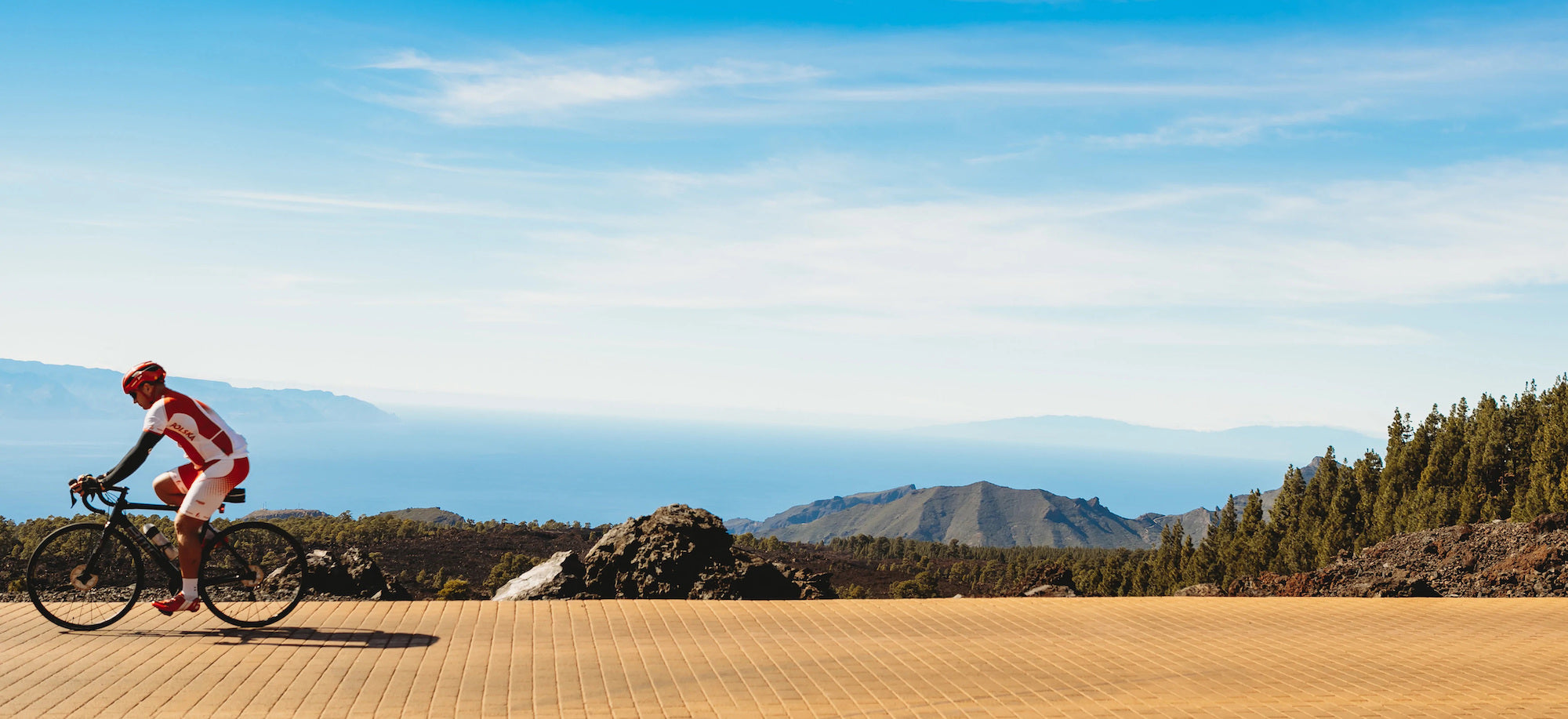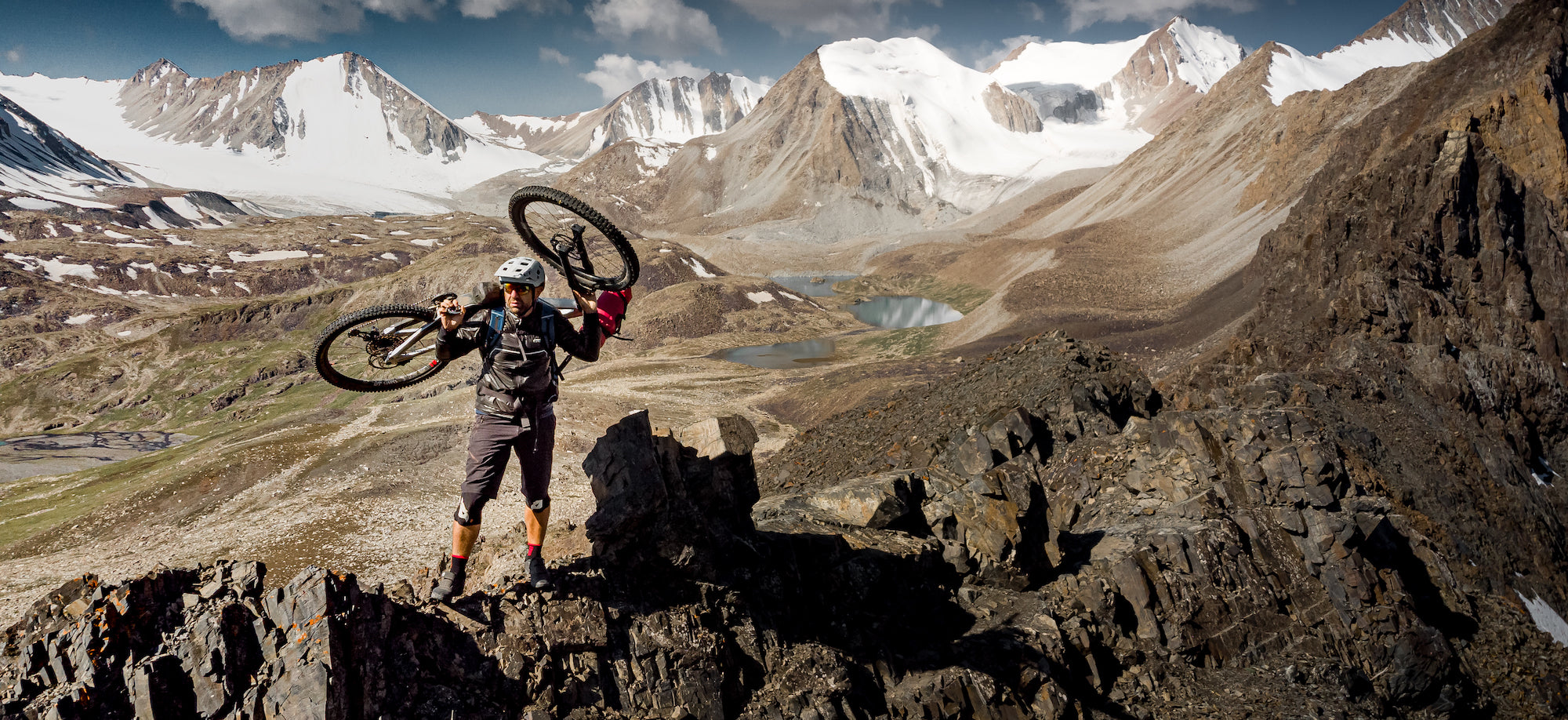I was 20 years old the first time I came to Alquézar. It was to go down the Rio Vero. A moment that I will never forget, one of the great shocks of my life at the bend when the site jumps out at us, on the small road (at the time) leading to the village. Arriving on the small square, the houses with ocher walls, dominated by the centuries-old fortress. A miniature "Alhambra", erected on the slopes of the Sierra de Guara, one of the moments which undoubtedly guided my entire life by further strengthening my love for these lands of Aragon.
By Patrick Dufaur
At that time, the "fashion" of canyoning had not yet been born, where it was in its infancy, and this activity was reserved for privileged people, mountain and nature lovers living on the northern slope of the range, of which we were a part. Also in those times Alquézar still had this authenticity which reinforced its charm, just a small grocery store, a single bar, the gutter in the middle of the street, the dogs and cats lying on the hot stones of the alleys, the women chatting seated on a chair at the doorstep, etc., etc.

Now, the village has changed, and certainly if the activity during the high summer period puts me off going there a little, I wouldn't allow myself to criticize. The rise of "green" tourism, and it is not the Mediterranean coast either, has allowed the region to develop and above all to give people work, and even to bring them back, avoiding a mass exodus .

The limestones and thyme of the Sierra, before seeing the "adventurers" of the 21st century that we think they are wandering around, helmeted and clad in neoprene suits or mounted on mountain bikes, saw our hunter ancestors pass by, a long time ago - gatherers, as evidenced by some "standing stones", and the wall paintings decorating many surrounding cavities.

Later the region was "Romanized", especially further down in the Somontano plain, numerous vestiges still exist in the form of remains of bridges, communication routes, villas, and other hydraulic works. It seems they also introduced the cultivation of vines, producing the excellent Somontano wine.

Then comes the Arab occupation. They divided the region into "Marches" in order to deal with Christian resistance from the North. With them was born the castle dominating the village with such an evocative name. Later around 1100, the city fell to Christian troops during the "Reconquista". For a long time this eagle's nest must undoubtedly have been a strategic point dominating the communications routes of the time, among other examples the Romanesque bridge of Villacantal spanning the Vero and connecting the village to Asque.

In the less distant past we will find traces of agricultural and pastoral activities, crop terraces, "Pozos de Nieve", pastoral shelters, and on the slopes of these mountains transhumance and communications routes going straight to the North in time when traveling did not rhyme with speed, witnesses of a rich and demographically dense past before the Black Death which ravaged Aragon in the Middle Ages, then much later the period of the rural exodus desired by Madrid at the end of the civil war and under the Franco regime. Here in the south of the sierra there are many loops available to our wheels. Some in the Somontano plain in the middle of the vines of the wine of the same name. These will undoubtedly be the most accessible, they generally take place on wide tracks without pitfalls, only perhaps a few short sections of connections will be on rolling single tracks. These routes are often marked, and are common with pedestrian and equestrian loops. In this sector, these are often family-friendly routes with low elevations. We will evolve around the villages of Bierge, Adahuesca, Abiego, Huerta del Vero, etc, etc...

The other sector will be located roughly to the north of a horizontal line passing through the villages of Radiquero, Alquezar, and Buera. The tracks will be much more demanding here, we will find more significant differences in altitude, and the clay of the routes of the plain will have given way to stones, our tires will suffer here from limestone and conglomerate. For example, we can go up a beautiful track above Alquezar to the hamlet of San-Pelegrin, from there we can reach the hermitage of the “Virgen de Vina” towards the West and go back down to Radiquero via beautiful single tracks and paths. sheep drailles, or from the same hamlet go north towards the “Meson de Sevill” building formerly serving as a stopover for transhumance and trade which was carried out on foot, further than the Pyrenees and up to the heart of the Aquitaine. From this old inn, we will push on to the “Tozal de Sevill”, to fully enjoy the panorama of the southern slope of the Pyrenees. We will return via a path dominating the track taken on the way out, this will be an introduction to the more difficult loops of the Sierra. Rocks, small steps, “light” trials will already be there, I also left a derailleur there, be careful. We will pass very close to a pastoral shelter already occupied a long time ago as evidenced by the wall paintings which adorn it. The reward will be the “Balsas de Basacol”, a beautiful water reserve, and a magical arrival with the crossing of the streets of Alquezar by bike. A beautiful day in these Aragonese sierras, a must-do.

Other more demanding loops could take us straight to the bottom of the “Rio Vero” canyon as far as the “Pont de Villacantal”; we will go up towards Asque and Colungo via secret tracks. The return to Alquezar will be via the GR1 and the “Pont de Fuenedebanos” from the aforementioned villages. Also from Rodellar, another mecca for canyoning and sport climbing, at the end of a small road, routes go to the bottom of Mascun, and even join the canyon by aerial paths on ledges where the fall does not is not permitted. These latter routes are reserved for experts.

Finally, further north in the Sierra towards the village of “Las Bellostas” we will also find what we are looking for. I came there about ten years ago, bad weather made us abandon our project. To compensate, before leaving for Ainsa for a "tourist" day in the rain, we wandered through the alleys of the village. The only living soul that day was an old gentleman who was tinkering in his henhouse. We struck up a conversation with him, and he confided his bitter feelings to us, telling us: "Luckily, there are French people who come to see us while walking, otherwise we wouldn't see anyone anymore." Ten years later, not much has changed, apart from one or two houses being renovated, the heirs of the old ones, living in the town and renovating a legacy left behind. Further south, of course, Nazarre and Otin still see groups of canyoning enthusiasts pass by in fine weather heading towards the "Gorgas Negras" and the "Mascun Supérieur", but these brief visits do not prevent the walls from falling. Starting from Las Bellostas, we will find a beautiful loop that you absolutely must do, on a network of very rolling tracks and trails, maintained by the Aragonese forestry services and some hunters, foresters and farmers. Perhaps like us you will be lucky enough to see a wild boar or two deer appear in front of you on a stroll, do not miss the elephant rock on the descent towards Balcès, it remains static.

Further west, still far from the attraction of the southern slope of the Sierra de Guara, with the offer linked to canyoning activities and other pleasures, from the village of Paules de Sarsa the loop of the “Dolmen de Las Belanzas.” Here on these wild lands, perhaps the word "ecology" takes on its full meaning, far from our living rooms where a handful of lesson-giving "ayatollahs" would like to give lessons to everyone. Now and before, the way of life of the inhabitants reflects an authentic way of living. To realize this, it is enough to imagine the daily life of the ancients; to be sure, like us, we must follow the paths which served in the past, and in fact not so long ago, as modes of communication and exchanges between the different villages. When I say not that long, it's a reality, I frequented the Sierra in my younger years, and many people my age can attest to this fact. A splendid network lined with stone walls for dozens of kilometers. This heritage, a true witness to an ancestral culture, would undoubtedly deserve to be classified as a UNESCO world heritage site, so that it remains and is preserved. Quiet !!!" let's not talk about it too much to avoid crowds. A very beautiful loop to do absolutely.

Now at the edge of the “Zona Zero” in the Arbe mountain starting from the village of Barcabo, a trace which, following the ridges, passes to the small abandoned village of Frontignan to join that of Olson, this one very much alive. We will return via a barranco, passing right next to the remains of a medieval fortress lost in the middle of nowhere, then through the hamlet of Hospitaled to rejoin the road. Certainly, the Sierra de Guara has attracted the flow of tourists thanks to the fashion for canyons, but be sure that it remains authentic. Alquezar has kept its charm, and has managed to restore itself skilfully, Rodellar has remained discreet, so what can we say about the wild immensities of the heights... So, have you decided? You are going there ?

To go there : For the South zone from Huesca, take the direction of Barbastro, before going back towards the North, following the obvious signs. For the North zone, from Ainsa head towards the indicated villages. For more precise indications, the approaches are indicated on VTOPO Premium.
Or sleep : Like everywhere, small campsites, often with bungalows to rent, rural lodges (in Spain: Casa rural) often at very low prices, hotel of course. Holy Week, Epiphany Week, Constitution Day, etc... a lot of people among others, also find out about the festivals particular to Aragon, festivals of the Virgin of the Pillar etc... In these periods risk of overabundance, and often finding full.
Where to eat : Everywhere, small restaurants at very competitive prices, generally the menu is also offered in the evening. Small bars with “tapas” on every street corner. Don't hesitate to get in touch with people, the Spanish love it.






Leave a comment